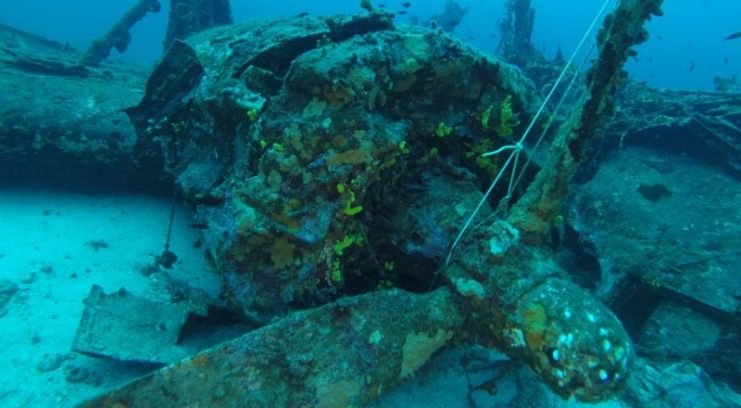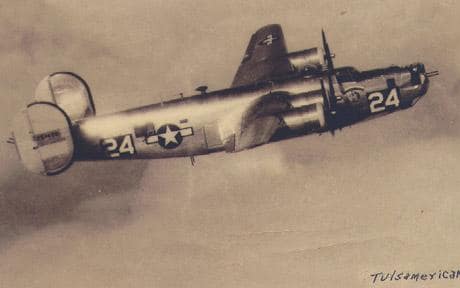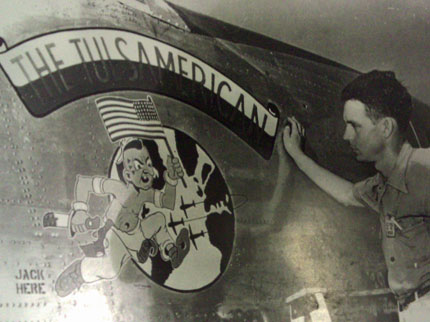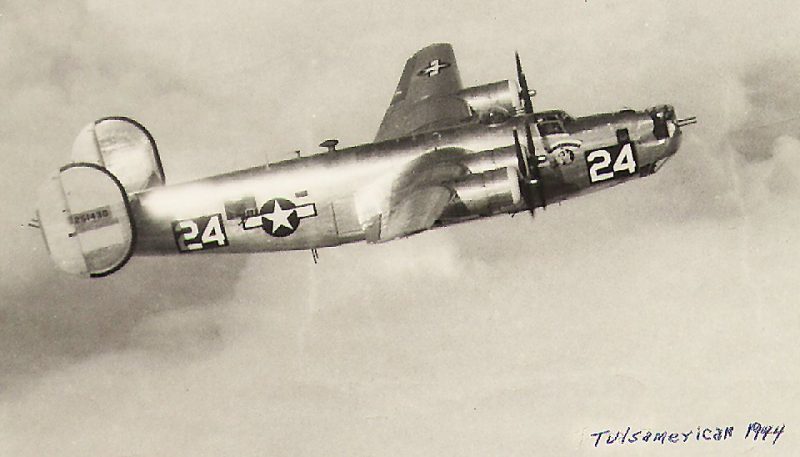A search for the remains of the plane known as the Tulsamerican had been going on for years. In 2010, a team from the Croatian Conservation Institute’s Department for Underwater Archaeology finally found the aircraft at the bottom of the Adriatic Sea, near the Isle of Vis. The plane was broken in two.
Brendan Foley is an archaeologist who participated in a month-long recovery project at the site. He said that they found equipment, clothing and human bones in the wreckage.
The Defense POW/MIA Accounting Agency (DPAA) sponsored the recovery effort. They are testing the bones found in the plane to determine who they belong to and hopefully bring closure to a 70-year mystery. In July 1944, the last of 18,000 B-24J “Liberator” bombers built in the Douglas Plant in Tulsa, Oklahoma, rolled out the doors of the factory.

The citizens of Tulsa purchased that plane. It had a unique art design on its nose with a copy of the art on handmade scrolls at each of the crew’s stations. That particular aircraft was known as the “Tulsamerican, ” and it was one of the more famous of the warplanes in WWII.

In October 1944, the Tulsamerican was assigned to the 765th Bomb Squadron. On its 151st mission, it was sent along with every available plane to attack oil refineries around Blechhammer and Odertal to support Allied forces in the Battle of the Bulge. 527 B-17s and B-24s launched that day with 300 P-38s and P-51s to escort them.
The attack was at the edge of the planes’ range. The crews were ordered not to lower their ball turrets unless an attack was imminent or the target had been reached to help conserve fuel. Unknown to Allied command, the Germans had placed their best Luftwaffe fighter groups in the area due to the Battle of the Bulge.

As the Allied bombers neared their target, the German planes attacked. The assault lasted only fifteen minutes, and the pilots never had a chance to get their ball turrets lowered.
The Tulsamerican flew in a formation of six B-24s. They were flying through clouds and nearly collided with another group of B-24s which had the effect of disorientating the pilots as they maneuvered to avoid a collision. Lieutenant Ford was commanding the bombers and led them higher and a mile to the right. Unknown to him, the Nazi pilots had spotted the planes with their turrets withdrawn and tracked them through the clouds. The Luftwaffe fighters attacked the bombers from below, right where they were most vulnerable without their ball turret guns.
Missing an engine and leaking fuel, the Tulsamerican released its bombs and headed back to base. Over Hungary, it ran into flak guns and took more damage. Lieutenant Ford decided they had to crash land the plane and aimed for the Isle of Vis. Unfortunately, the aircraft ditched in the ocean, and three of the crew died on impact. The rest of the men were recovered by local fishermen and a British Rescue Team.
The Tulsamerican was a B-24 Liberator heavy bomber with a 33-meter wingspan and a 20-meter long fuselage. It had ten 12.7 caliber M2 Browning machine guns.
According to the DPAA, there are still 73,000 service members listed as missing from WWII.
Val Miller is the last remaining survivor of the Tulsamerican wreck. He was pulled from the water by a couple of local men. He did not speak to them and never learned their names. They took him to the island where he was treated for a broken leg by a British doctor. He spent 16 months in hospital before being discharged.
Miller went on to obtain a law degree and served in the Oklahoma state House of Representatives for four years. He then practiced law in the oil and gas field before retiring.
